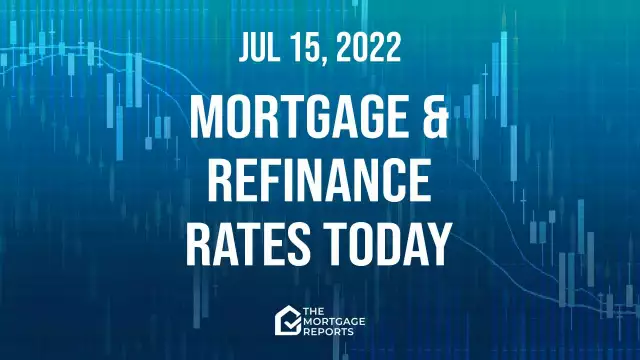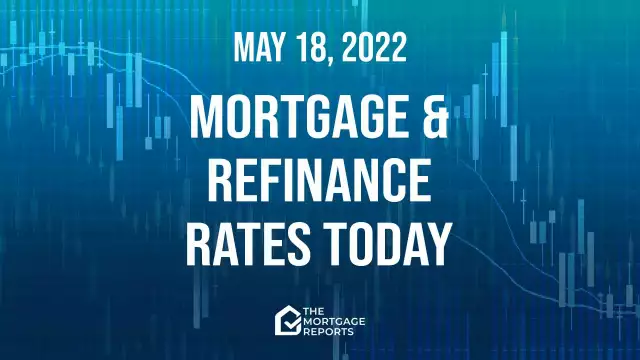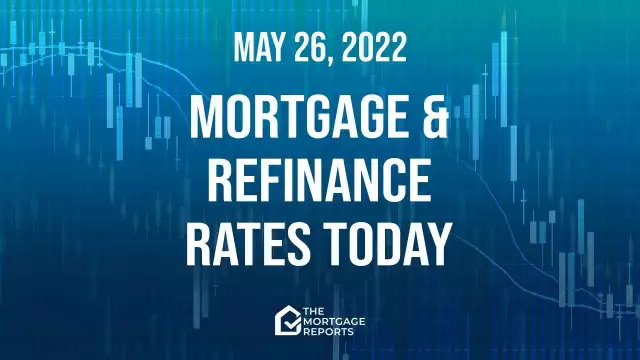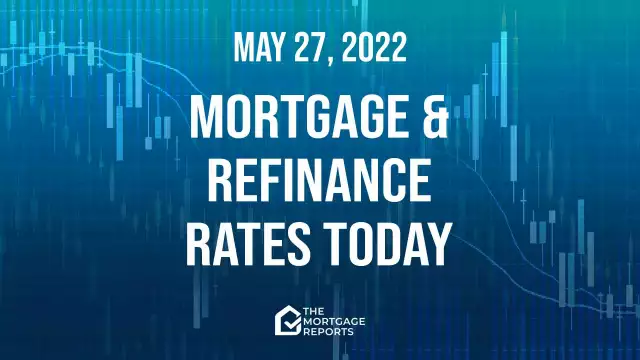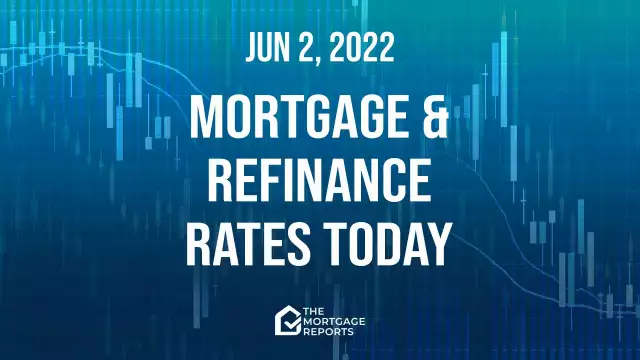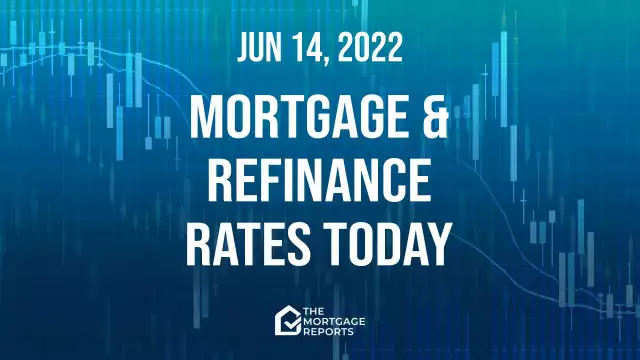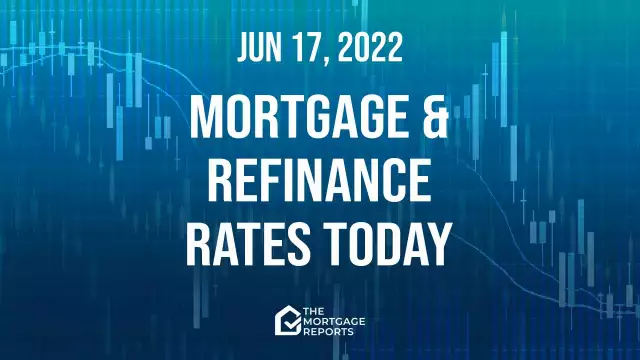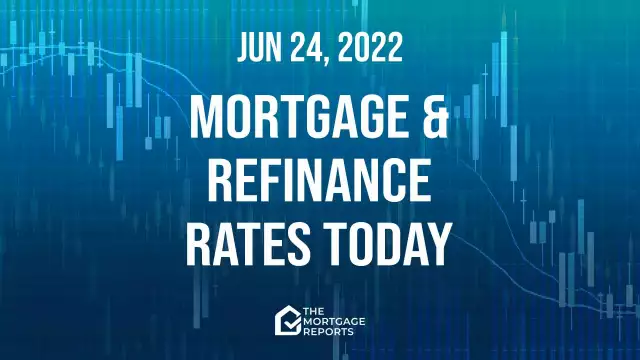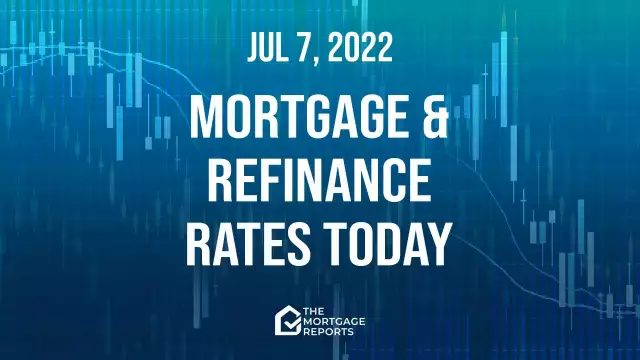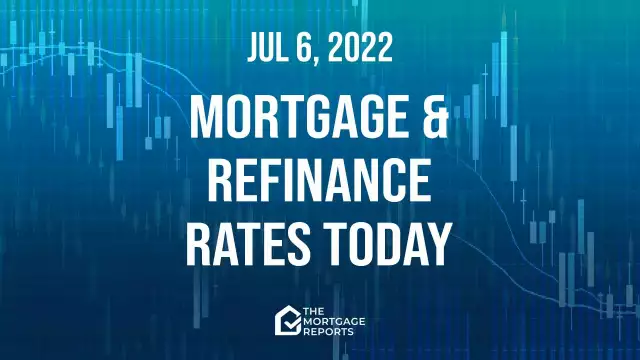Mortgage And Refinance Rates, July 15 | Rates steady-ish today
Mortgage And Refinance Rates, July 15 | Rates steady-ish today
Today’s mortgage and refinance rates
Average mortgage rates rose again yesterday, but only moderately. The dramatic movements we’ve seen recently have tended to cancel each other out, leaving a gentle upward trend.
So far this morning, mortgage rates today look likely to be unchanged or barely changed. But, with volatility a feature of markets at the moment, there’s no guarantee things will stay that way.
Current mortgage and refinance rates
Should you lock a mortgage rate today?
Don't lock on a day when mortgage rates look set to fall. My recommendations (below) are intended to give longer-term suggestions about the overall direction of those rates. So, they don’t change daily to reflect fleeting sentiments in volatile markets.
Mortgage rates moved only a little higher over the month of June. And, while they were appreciably higher yesterday evening than they were on Jul. 1, this month may well follow June’s pattern. Once the dramatic rises and falls cancel each other out, we’re left with a shallowly rising underlying trend.
So, for now, my personal rate lock recommendations for the longer term must remain:
>Related: 7 Tips to get the best refinance rate
Market data affecting today’s mortgage rates
Here’s a snapshot of the state of play this morning at about 9:50 a.m. (ET). The data, compared with roughly the same time yesterday, were:
*A movement of less than $20 on gold prices or 40 cents on oil ones is a change of 1% or less. So we only count meaningful differences as good or bad for mortgage rates.
Caveats about markets and rates
Before the pandemic and the Federal Reserve’s interventions in the mortgage market, you could look at the above figures and make a pretty good guess about what would happen to mortgage rates that day. But that’s no longer the case. We still make daily calls. And are usually right. But our record for accuracy won’t achieve its former high levels until things settle down.
So use markets only as a rough guide. Because they have to be exceptionally strong or weak to rely on them. But, with that caveat, mortgage rates today look likely to hold steady or nearly steady. However, be aware that “intraday swings” (when rates change direction during the day) are a common feature right now.
Important notes on today’s mortgage rates
Here are some things you need to know:
A lot is going on at the moment. And nobody can claim to know with certainty what will happen to mortgage rates in the coming hours, days, weeks or months.
Are mortgage and refinance rates rising or falling?
Mortgage rates moved yesterday in a similar way to their Wednesday pattern — and for the same reasons. What are those reasons? Read my analysis from yesterday’s daily report.
Briefly, markets have been unable to decide whether they’re more freaked out by inflation or the fear of a recession. On days when they’re focused on inflation, mortgage rates tend to rise. And on days when they’re more fearful of a recession, those rates tend to fall.
This morning’s retail sales figures for June could have gone either way. If they’d been great, investors might have breathed a sigh of relief that any US recession remains some way off. And markets might have returned to fretting about inflation. Had the figures been bad, they might have inflamed recession fears, pushing mortgage rates lower.
In the event, those retail sales figures were a little better than expected, rising 1% that month. Analysts had forecast a 0.9% increase. Still, such a small difference may leave markets shrugging at the outcome.
Foreign as well as domestic threats
Of course, it’s not just US retail sales that are influencing investors today. There are plenty of external reasons to worry about a recession.
For example, China’s output contracted by 2.6% between April and June compared with the previous quarter, according to official figures published overnight.
And The Economist suggested in an e-newsletter this morning that a recession in Europe is likely soon. It explained, “Prices for delivery of [natural] gas this winter, at €182/MWh ($184/MWh), are almost as high as in early March, after Russia invaded Ukraine, and seven times their long-run level.”
It’s worth repeating a quote, which I included in yesterday’s report. Kristalina Georgieva, who is managing director of the International Monetary Fund (IMF), wrote in a blog on Wednesday:
Time was when America could shrug off bad economic news in distant lands. But, in today’s interconnected, globalized world, everyone’s at risk of catching a cold when anyone sneezes.
Read the weekend edition of this daily article for more background.
Recent trends — updated today
Over much of 2020, the overall trend for mortgage rates was clearly downward. And a new, weekly all-time low was set on 16 occasions that year, according to Freddie Mac.
The most recent weekly record low occurred on Jan. 7, 2021, when it stood at 2.65% for 30-year fixed-rate mortgages.
Rates then bumbled along, moving little for the following eight or nine months. But they began rising noticeably that September. Unfortunately, they’ve been mostly shooting up since the start of 2022, although May and June were kinder months.
Freddie’s Jul. 14 report puts that same weekly average for 30-year, fixed-rate mortgages at 5.51% (with 0.8 fees and points), up from the previous week’s 5.3%.
Note that Freddie expects you to buy discount points (“with 0.8 fees and points”) on closing that earn you a lower rate. If you don’t do that, your rate would be closer to the ones we and others quote.
Expert mortgage rate forecasts
Looking further ahead, Fannie Mae, Freddie Mac and the Mortgage Bankers Association (MBA) each has a team of economists dedicated to monitoring and forecasting what will happen to the economy, the housing sector and mortgage rates.
And here are their current rate forecasts for the remaining three quarters of 2022 (Q2/22, Q3/22, Q4/22) and the first quarter of next year (Q1/23).
The numbers in the table below are for 30-year, fixed-rate mortgages. Fannie’s were published on Jun. 16, and the MBA’s on Jun. 10. Freddie’s were released on Apr. 18. But it now updates its figures only quarterly, so they’re already looking stale.
| Forecaster | Q2/22 | Q3/22 | Q4/22 | Q1/23 |
| Fannie Mae | 5.1% | 5.0% | 5.0% | 5.0% |
| Freddie Mac | 4.8% | 4.8% | 5.0% | 5.0% |
| MBA | 5.1% | 5.1% | 5.0% | 5.0% |
Of course, given so many unknowables, the whole current crop of forecasts might be even more speculative than usual. Recent events certainly make them look that way.
Find your lowest rate today
You should comparison shop widely, no matter what sort of mortgage you want. As federal regulator the Consumer Financial Protection Bureau says:
“Shopping around for your mortgage has the potential to lead to real savings. It may not sound like much, but saving even a quarter of a point in interest on your mortgage saves you thousands of dollars over the life of your loan.”
Mortgage rate methodology
The Mortgage Reports receives rates based on selected criteria from multiple lending partners each day. We arrive at an average rate and APR for each loan type to display in our chart. Because we average an array of rates, it gives you a better idea of what you might find in the marketplace. Furthermore, we average rates for the same loan types. For example, FHA fixed with FHA fixed. The end result is a good snapshot of daily rates and how they change over time.
